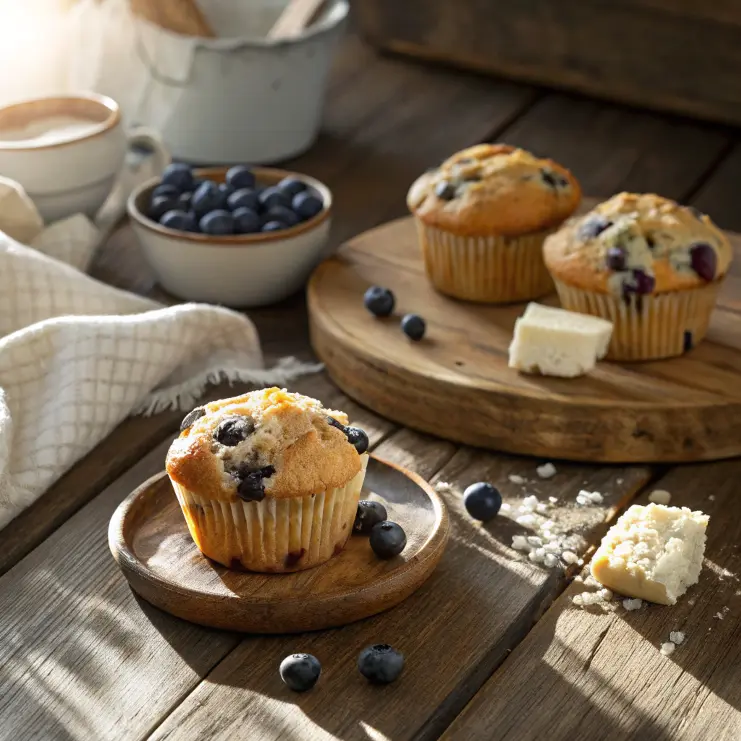Table of Contents
I’m Sophia Wren, and I can’t tell you how many mornings started with a warm muffin and a steaming cup of coffee as I wandered through my blueberry bushes near Portland. This article will dive into everything you need to know about Cottage Cheese Blueberry Muffins—from why they’re so moist and protein-packed, to how to bake them just right, plus options for yogurt swaps and fun variations. You’ll also get pro baking tips and answers to your top FAQs. Let’s lace up those aprons and get ready to bake a batch that’s as wholesome as it is delicious!
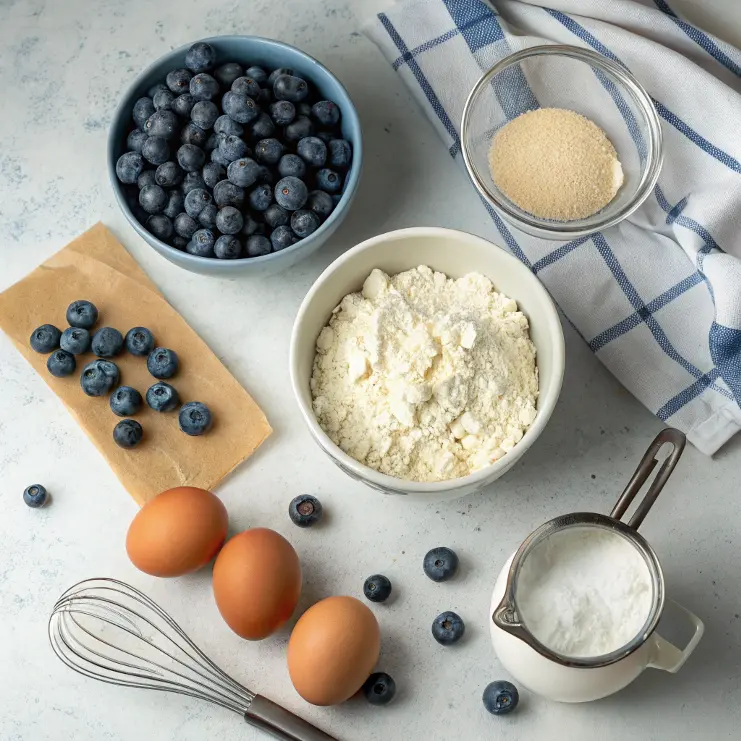
Part 1: Why Cottage Cheese Blueberry Muffins Rock
When I first experimented with Cottage Cheese Blueberry Muffins, I didn’t expect much—just a few extra blueberries in the mix. But once they emerged from the oven, I realized these muffins were next‑level. They’re moist, packed with protein, and perfect for busy mornings or snackers. Unlike traditional muffins that rely heavily on oil or butter, the cottage cheese adds creaminess without weighing you down. That’s why I often link to my Blueberry Jam Recipes when I talk about breakfast ideas—they both highlight blueberries at their best.
Cottage cheese—nature’s protein booster
Cottage cheese brings roughly 11 g of protein per 100 g, making it an excellent addition to baked goods . It also provides calcium and B‑vitamins, which support bone health and energy. The texture is light and tender when blended into batter, so you get richness without heaviness. These qualities are why I often reference my Protein Pancakes with Cottage Cheese post when recommending high‑protein breakfasts.
Blueberries—antioxidants and flavor
Blueberries aren’t just flavorful—they’re also loaded with antioxidants and fiber, making them a nutritional superstar . In these muffins, they burst with juicy sweetness that perfectly balances the tang of the cheese. Tossing the berries in a bit of flour before folding them in helps prevent sinking—one of my key tips from Healthy Blender Muffins posts.
Together, those two powerhouse ingredients create muffins that aren’t just tasty—they’re nutritious and satisfying. In the next section, I’ll share how to seamlessly work cottage cheese into your batter for the perfect texture and taste. Ready to dig in?
Part 2: How to Add Cottage Cheese to Your Muffins
When crafting Cottage Cheese Blueberry Muffins, the key is blending cottage cheese in a way that enhances texture without creating a curdy look. Let’s break it down.
Best Tips for Combining Cottage Cheese
Start by blending a portion of the cottage cheese until creamy — this gives you smooth moisture without lumps. The creamy texture gently lifts the batter, making muffins light and fluffy (ifoodreal.com). Aim for low-fat or full-fat cottage cheese, depending on your desired richness—both deliver around 11–12 g of protein per 100 g (getthegloss.com). Use it to replace part of the milk or oil in your standard muffin mix. For example, if your recipe calls for a cup of milk, substitute with a half cup of milk and a half cup of cottage cheese. This tweak preserves moisture, boosts protein, and cuts fat without compromising flavor.
Integrating cottage cheese this way works great with other staples on my blog, like Whole Grain Blueberry Pancakes, helping create satisfying breakfast options across recipes.
Texture and Taste Enhancements
Avoid overmixing once you’ve added cottage cheese—fold gently until almost combined to prevent gluten activation that can make muffins dense (thebigmansworld.com, ifoodreal.com). If you prefer completely smooth muffins, fully blend the cottage cheese before adding the dry ingredients. Otherwise, leaving small curds adds character and subtle tang.
To keep blueberries suspended in the batter, toss them in a tablespoon of flour first—this simple trick stops them from sinking to the bottom (nourishedbynic.com). That way, each bite is bursting with juicy fruit. I often link to Blueberry Lemon Loaf in this section since it shares the same method.
These techniques ensure your muffins come out tender, moist, and visually appealing. In Part 3, we’ll compare cottage cheese and yogurt side by side—so you can decide which is best for your baking style. Ready to dive into nutritional comparisons next?

Part 3: Cottage Cheese vs Yogurt in Muffins
When it comes to substituting cottage cheese or yogurt in muffins, both bring moisture and protein—but they aren’t identical. Here’s a clear comparison to help you choose.
Nutritional Comparison
Cottage cheese and Greek yogurt are almost neck and neck in protein—cottage cheese offers about 24 g per cup, while Greek yogurt packs in around 23–25 g (onepeloton.com). If you’re selecting for high-protein content, either works. Cottage cheese typically contains 11.5 g protein and 4.3 g fat per 100 g, compared to Greek yogurt’s 8.7 g protein and 4.1 g fat (health.ucdavis.edu). The main difference: cottage cheese is saltier and higher in sodium, while yogurt has more calcium and beneficial probiotics (eatingwell.com).
For bone health and gut balance, Greek yogurt slightly leads. But if you’re prioritizing protein and don’t mind the extra sodium, cottage cheese is excellent—and it adds vitamins A, D, E, and folate too .
Baking Behavior & Moisture
In baking, both ingredients add tender texture and moistness. However, cottage cheese behaves differently: the curds often melt into gooey pockets, while yogurt integrates smoothly and evenly (wondersofcooking.com). If you blend cottage cheese first, muffins turn out very smooth; leave it unblended, and you get savory-curd contrast inside (ifoodreal.com). Both bake well, but cottage cheese can make batter slightly looser—many bakers recommend adding a little extra flour to prevent muffins from collapsing (ifoodreal.com).
If you’re after a light, creamy muffin, Greek yogurt might be easier. But if you love pockets of cheesy richness and extra protein, cottage cheese is the way to go. Next up, let’s look at baking tips and creative variations to elevate your Cottage Cheese Blueberry Muffins even further!
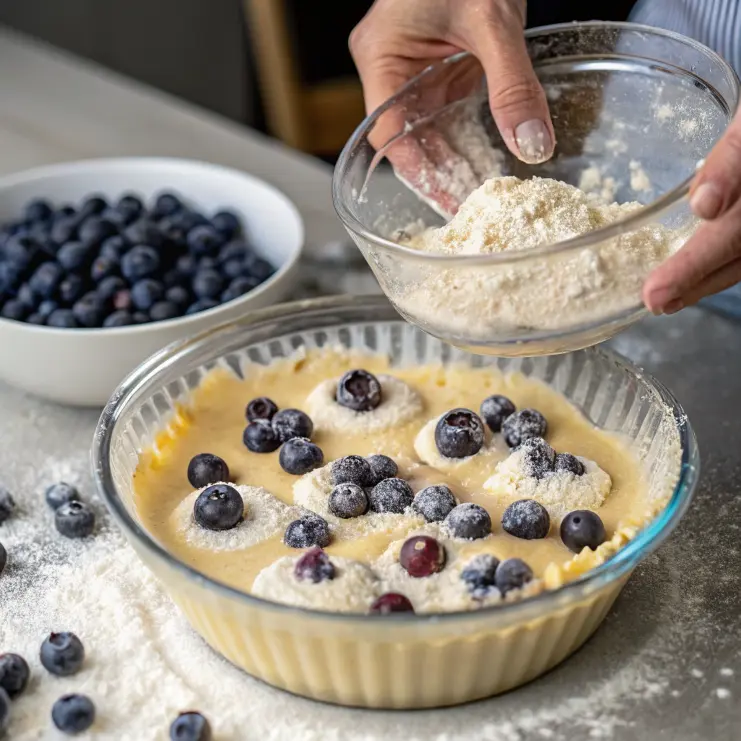
Part 4: Baking Tips & Variations
When you’re baking Cottage Cheese Blueberry Muffins, small tweaks can make a big difference in flavor and texture. Let’s dive into two easy ways to elevate your muffins.
Preventing Sinking Blueberries
No one likes muffins with all the berries at the bottom. To keep blueberries suspended evenly, toss them in 1–2 tablespoons of flour before gently folding them into the batter—this classic trick keeps fruit distributed throughout . Also, avoid overmixing once the fruit is added; folding gently minimizes bursting and bleed, keeping your muffins beautifully marbled. I use the same method in my Blueberry Lemon Loaf and One‑Bowl Blueberry Scones posts—both come out perfectly even.
For large wild blueberries, reduce oven temperature by 25 °F and bake 2–3 minutes longer. This slower bake prevents the berries from bursting and maintains even color and flavor.
Flavor Add‑Ins & Dietary Tweaks
Enhance your muffins by stirring in a teaspoon of vanilla extract or a pinch of cinnamon for cozy flavor depth. You can even add a zesty twist by including lemon zest or a tablespoon of cocoa powder for a chocolate‑blueberry version. Want a crunchy topping? Sprinkle oats, chopped nuts, or turbinado sugar on top before baking.
For a gluten-free option, substitute the all-purpose flour with a 1:1 gluten-free blend. Or swap half the flour for almond meal to boost healthy fats and texture. If you’d like dairy-free muffins, try mixing plain plant-based yogurt with cottage cheese for a tangy flavor. I explore this combo in my Dairy‑Free Blueberry Breakfast Bars post, showing how easily you can adapt the recipe for different dietary needs.
With these tips and tweaks, you’re well on your way to baking muffins that suit your taste, diet, and style. In the next section, I’ll address your top FAQs about cottage cheese and blueberries, then wrap up with a conclusion full of encouragement and ideas!
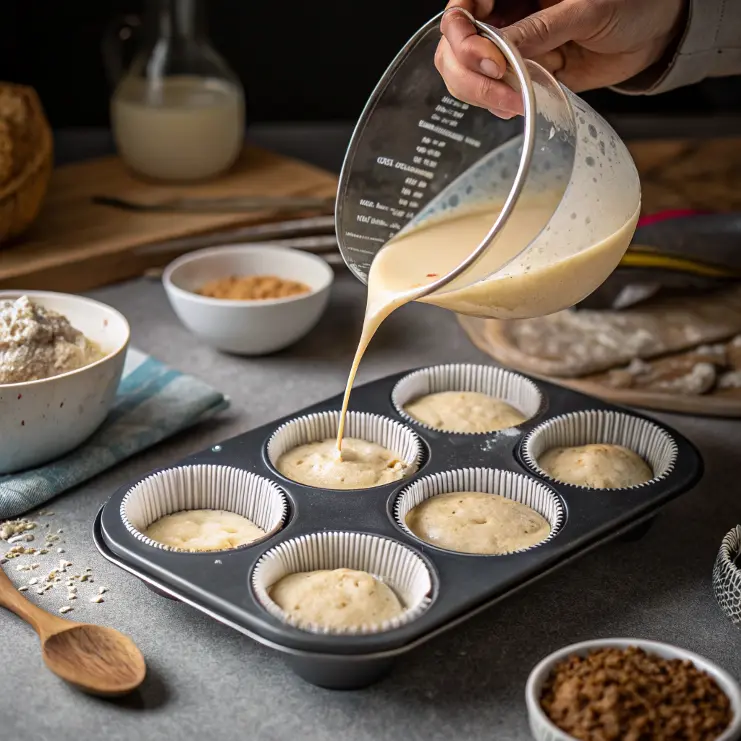
FAQs
Are cottage cheese and blueberries healthy?
Yes! Cottage cheese is rich in protein, calcium, and B-vitamins, while blueberries are loaded with antioxidants and fiber, offering a nutritious combo in these muffins.
Can I add cottage cheese to muffin mix?
Absolutely. Blend it until smooth and substitute part of your milk or oil. This adds moisture, protein, and richness without extra fat.
Does cottage cheese melt when baked?
Not exactly. If unblended, it provides creamy pockets inside muffins. If blended, it melts into the batter, creating tender texture.
Can I use cottage cheese instead of yogurt for muffins?
Yes. Both offer similar protein, moisture, and fat. Cottage cheese gives a tangier flavor and more curd texture, while yogurt yields consistent smoothness.
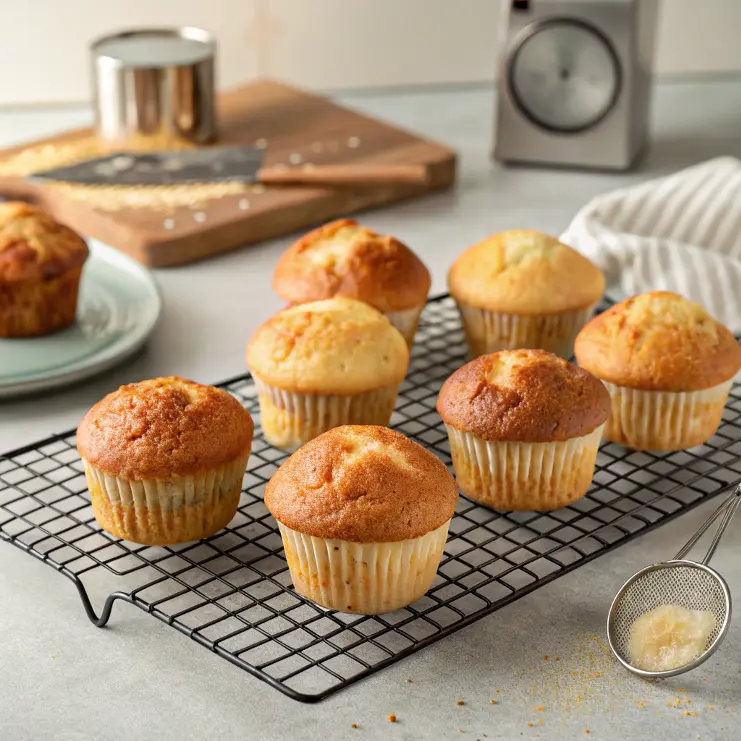
Conclusion
Baking Cottage Cheese Blueberry Muffins brings together nutrition, texture, and flavor in a way few muffins can match. With simple steps—like blending cottage cheese, tossing berries in flour, and experimenting with toppings—you’ll create muffins that are moist, protein-packed, and bursting with flavor. Whether you’re adding cinnamon for warmth or going gluten-free, this recipe adapts well while still delivering that nostalgic blueberry goodness. Embrace the creative process and enjoy sharing them with friends and family. Keep cooking with joy!
Print
Cottage Cheese Blueberry Muffins: Moist, Protein‑Packed Breakfast Treat
- Total Time: 35 minutes
- Yield: 12 muffins 1x
- Diet: Vegetarian
Description
Moist, protein-packed Cottage Cheese Blueberry Muffins made with fresh blueberries and creamy cottage cheese—perfect for breakfast or snacks.
Ingredients
1 cup cottage cheese (blended smooth)
2 large eggs
1/2 cup sugar
1/4 cup milk
1/4 cup oil or melted butter
1 tsp vanilla extract
1 1/2 cups all-purpose flour
1 1/2 tsp baking powder
1/4 tsp salt
1 cup fresh or frozen blueberries (tossed in flour)
Instructions
1. Preheat oven to 350°F (175°C). Line or grease a muffin tin.
2. Blend cottage cheese until smooth and mix with eggs, sugar, milk, oil, and vanilla.
3. In another bowl, whisk flour, baking powder, and salt.
4. Combine wet and dry ingredients until just mixed. Do not overmix.
5. Fold in blueberries gently.
6. Scoop batter into muffin cups 3/4 full.
7. Bake for 20–25 minutes or until golden and a toothpick comes out clean.
8. Cool in tin for 5 minutes, then transfer to a rack to cool completely.
Notes
Toss blueberries in flour to prevent sinking.
Use low-fat or full-fat cottage cheese.
Blend cottage cheese smooth for uniform texture, or leave small curds for a rustic bite.
Great with lemon zest or cinnamon.
- Prep Time: 10 minutes
- Cook Time: 25 minutes
- Category: Breakfast, Snack
- Method: Baking
- Cuisine: American
Nutrition
- Serving Size: 1 muffin
- Calories: 145
- Sugar: 9g
- Sodium: 190mg
- Fat: 6g
- Saturated Fat: 2g
- Unsaturated Fat: 3g
- Trans Fat: 0g
- Carbohydrates: 18g
- Fiber: 1g
- Protein: 6g
- Cholesterol: 30mg

